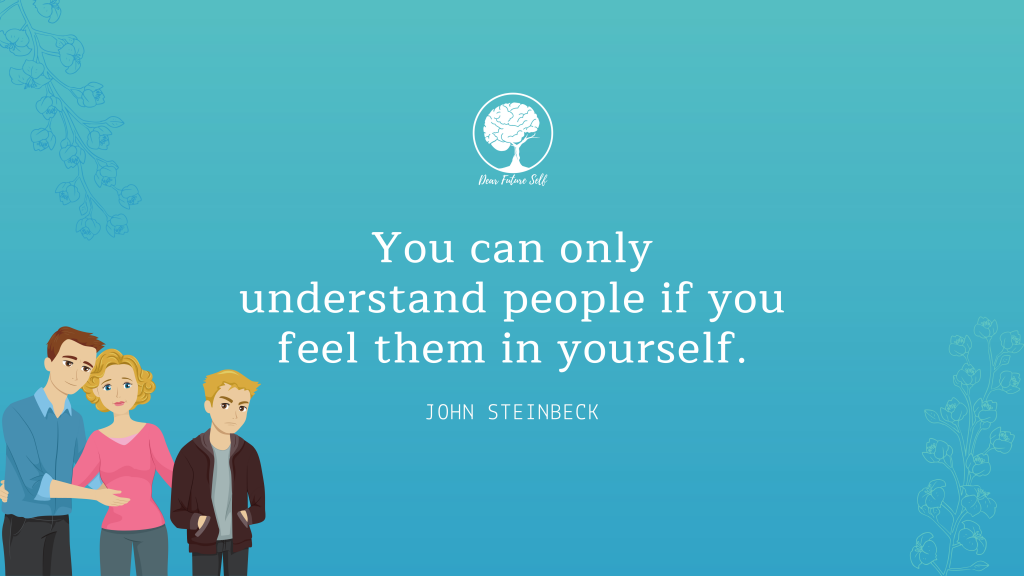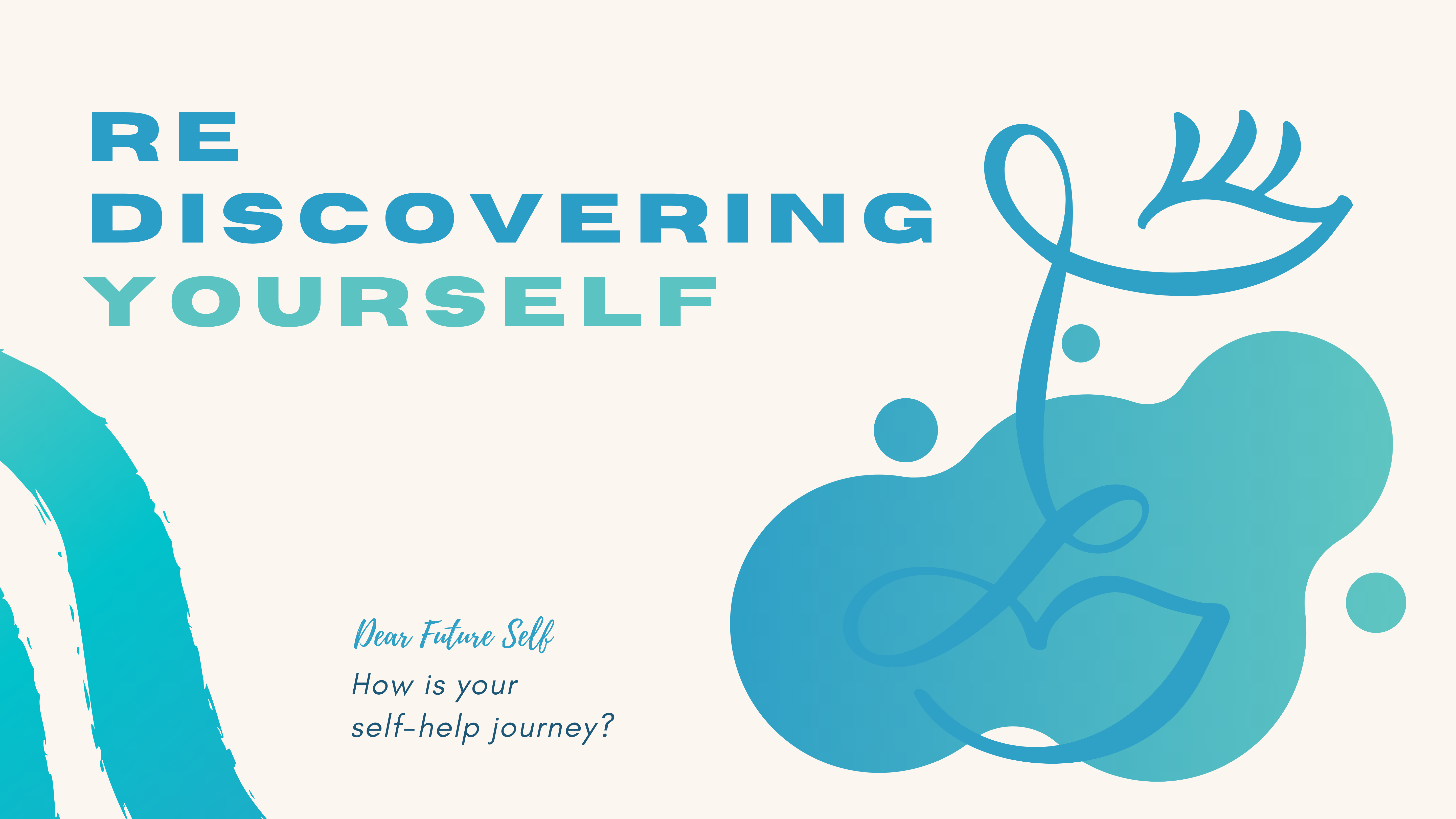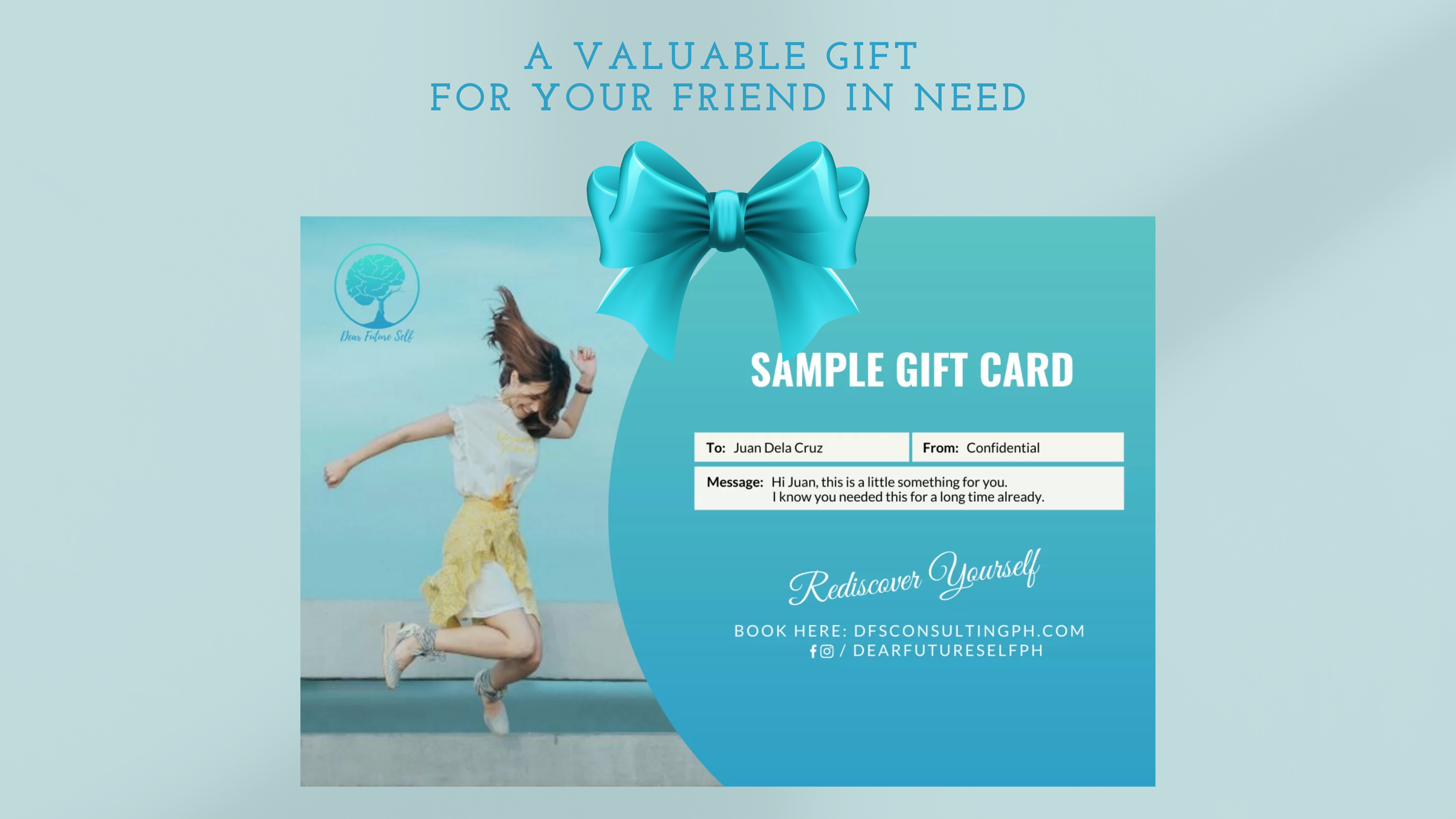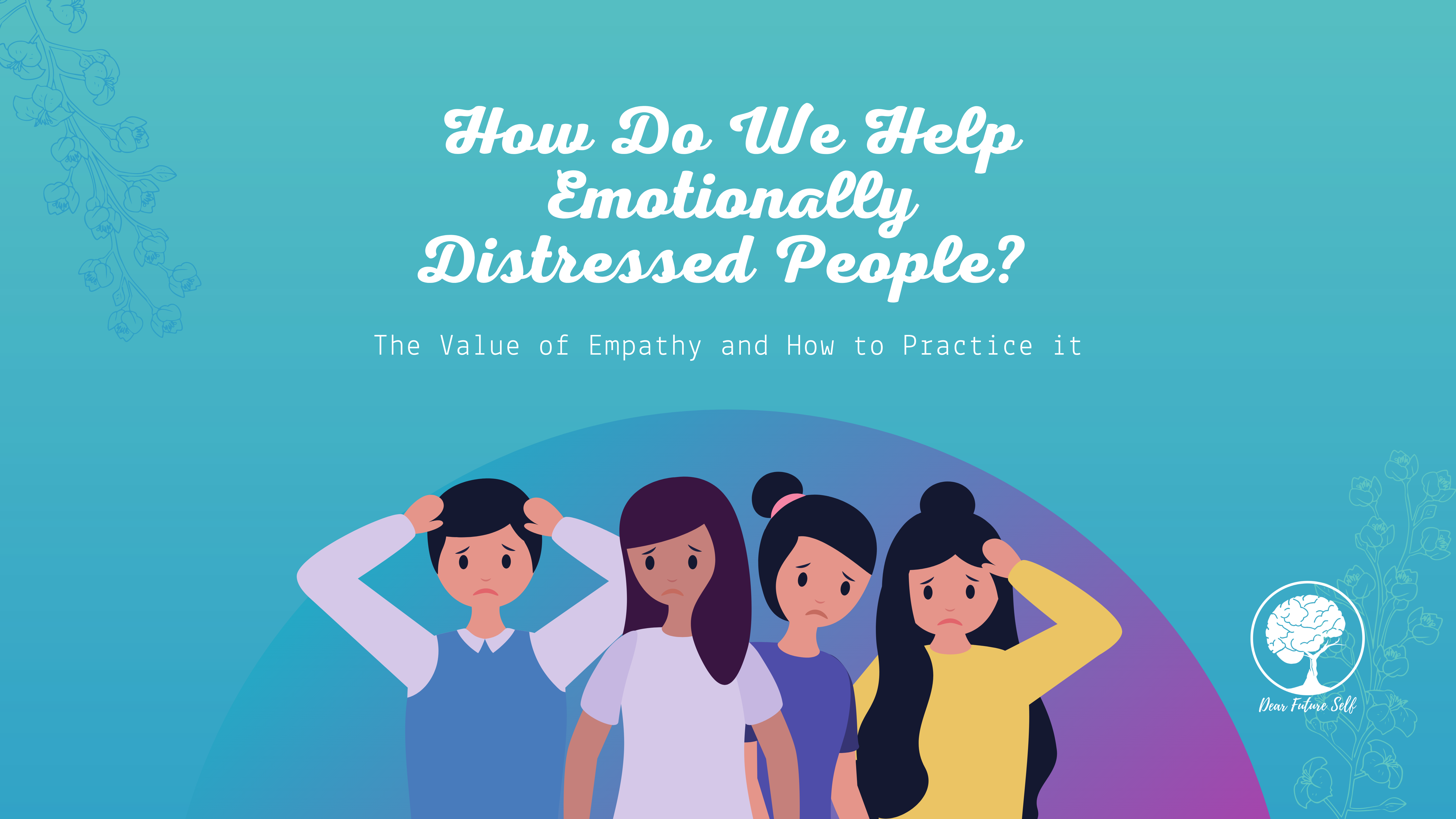
11 Jul How Do We Help Emotionally Distressed People?
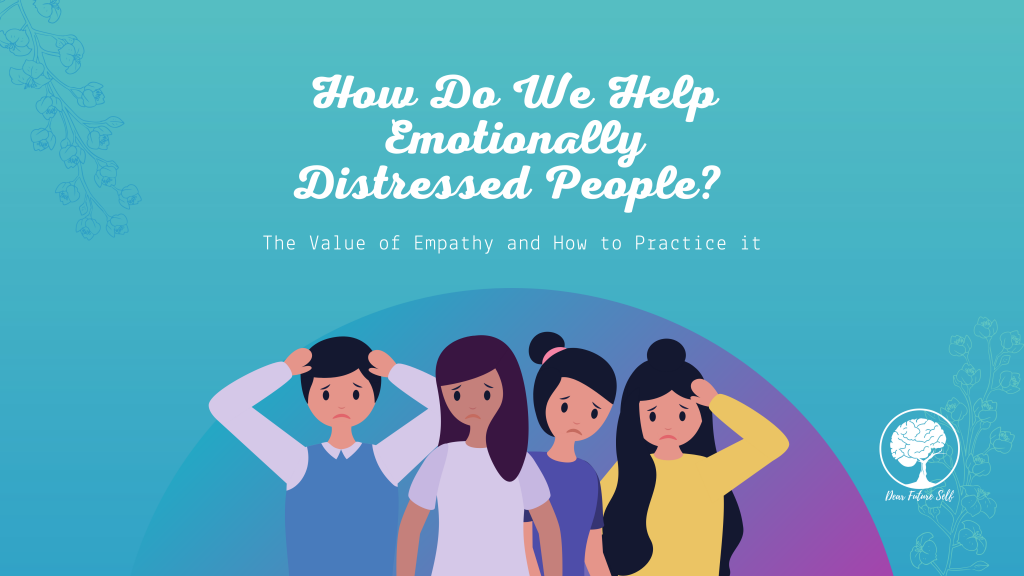
The Value of Empathy and How to Practice it
When people are distressed, they experience a state of emotional anguish because of several stressors and demands in their life that they find struggle coping with (Arvidsdotter et al., 2015). In order to help emotionally distressed people, it is important to let them empty out their overwhelming feelings, along with the stressors and demands that trouble them. We also need to be careful not to quickly spurt out advice without knowing their situation well enough. A better approach then is to listen first and promote a space for them to share, which not only guides us to properly assess the situation, but gives them the chance to explore their own concerns while feeling heard, cared for, supported, and valued.
But not all emotionally distressed people will be eager to share their thoughts and feelings with us. There may be many who are hesitant to be vulnerable about their problems. On the other hand, some would be very willing to open up, but would stop midway or become less open because of the response and reaction they receive. How can we then encourage people to openly and continually share themselves with us?
This is where the importance of empathy comes in, which is the approach of understanding the feelings of another and communicating this to them. Having empathy in our conversations allows us to make people feel heard and understood, which often drives them to become more involved and eager to disclose themselves. Empirical literature has also confirmed the importance of empathy to positive outcomes of therapy (Elliot, Greenberg, Watson, Timullak, & Freire as cited in Hill 2019). In empathy, we, as the helper, do not simply say “I know how you feel” but go beyond to actually labeling our helpee’s emotions (Gazda, 2006). For instance, when Carl Rogers, founder of the humanistic approach in psychology, counseled a client on his anger, he evidently showed empathy by succinctly rephrasing the client’s situation and his feelings (Hill, 2019). The client clearly felt he was being listened to which prompted him to reveal more and dive into self-exploration on his thoughts and emotions. Thus, with empathy, we show that we are listening non judgmentally and attempting to understand. We are also providing a safe space for emotionally distressed people to further explore their feelings and thoughts on problems.
However, when empathy is not present in the conversation, the interaction becomes unhelpful, sometimes even harmful. For instance, if Carl Rogers disregarded his client’s feelings of anger or denied he was angry, he not only failed to understand his client, but prohibited them from recognizing, expressing, and understanding their negative feelings. This does not address the client’s emotional state, but only hinders their progress on healing and recovery. Additionally, they become less likely to challenge detrimental beliefs, discover behavioral patterns, and strive for change.
With the value of empathy, how then could individuals practice and develop this attitude? For starters, one does not need to have the same life experience or feelings as the person in distress does. Sympathy is different from empathy where the former experiences the other’s feelings, while the latter understands them. More accurately, empathy is placing ourselves in someone else’s subjective realities, through using the appropriate nonverbal and verbal skills to help (Hill, 2019).
For Gazda, there are three steps on how to communicate with empathy to others:
1) Carefully listen to their feelings as a result of what has happened to them.

This requires us to be very attentive and present at the moment. We need to take note of the words and narrative on what was being shared with us. When they see us actively showing concern and focus, this will likely be reciprocated by them in becoming more trusting and eager to share.
2) Identify and label their feelings and current situation.
Once we’ve heard their stories, the second step is to identify and label the individual’s feelings and situation. It would be actually helpful to observe the emotionally distressed person’s surface and underlying feelings. Surface feelings are emotions that are readily noticeable from the words used and how it was said, while underlying feelings are less obvious and are inferred or interpreted from the individual’s statements (Gazda, 2006). For example, a student felt angry because her teacher reprimanded her during class for not submitting her homework on time. Surface feelings may be seen as anger and shame, while underlying feelings show hurt and disappointment. Distinguishing both types of feelings can provide greater depth and understanding toward their context.
3) Rephrase these identified feelings with their situation to the individual.
In the third and last step, we are conveying that we are trying to understand the emotionally distressed person’s feelings and situation. For instance, based on the previous statement, we can then say “You seem angry and hurt by your teacher’s reprimanding you in class.”. If done well, they will feel heard and acknowledged, making it easier for us to establish a foundation of trust, support, encouragement, and care with them.
Empathy does not always come easy to people. It may be difficult at the beginning to actively listen, determine an individual’s feelings, and to respond immediately all at the same time. However, with practice comes improvement and the outcome of being able to effectively help others while making them feel heard and understood. This would be especially helpful for those who are emotionally distressed because they may not be in the proper headspace to analyze their overwhelming emotions and complicated circumstances. Having someone who can be there to listen without judgement, providing instead an opportunity for expression, may be more than enough for them to feel better and to start their journey on self-healing.
What can you now say to your ![]() , with regards to how you see the practice of empathy and your relationship with it?
, with regards to how you see the practice of empathy and your relationship with it?
References:
Arvidsdotter, T., Marklund, B., Kylen, S., Taft, C., & Ekman, I. (2015). Understanding persons with psychological distress in primary health care. Scandinavian Journal of Caring Sciences. https://doi.org/10.1111
Hill, A. (2017, January 26). Carl Rogers Counsels An Individual On Anger. YouTube. https://www.youtube.com/watch?v=uRCD3anKsa0&t=1212s
Hill, C.E. (2019). Helping Skills: Facilitating Exploration, Insight, and Action (5th ed.). Washington, D.C.: APA.
Gazda, G.M., Asbury, F. R., Balzer, F.J., Childers, W.C., & Walters, R.P. (2006). Human Relations Development: A Manual for Educators (7th ed). MA: Allyn & Bacon.
Self-Help Corner
Seek Professional Help

Gift Certificates & Self-Care Package
Connect with Us


